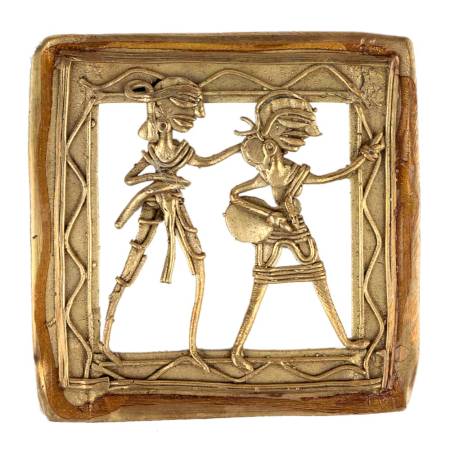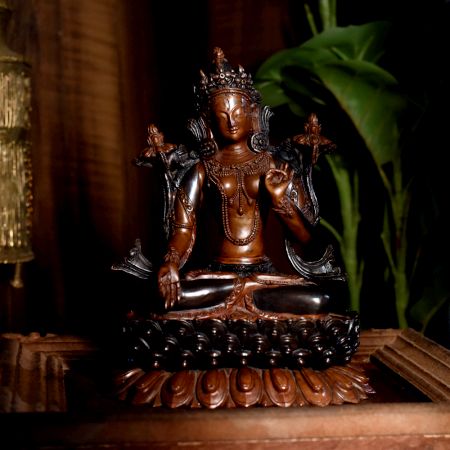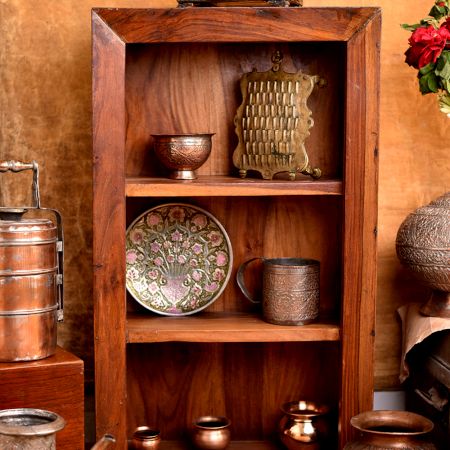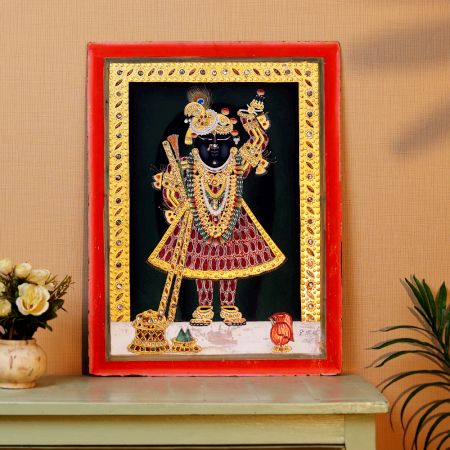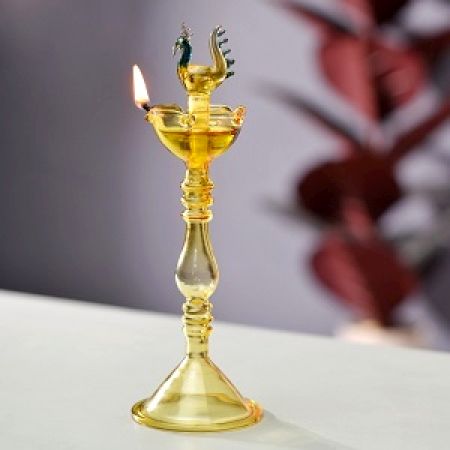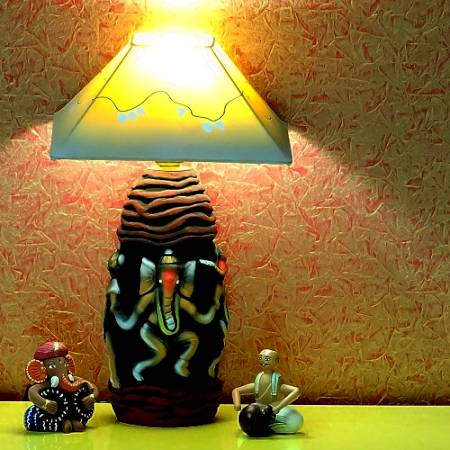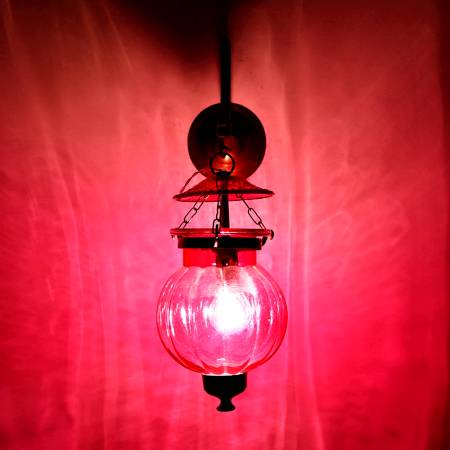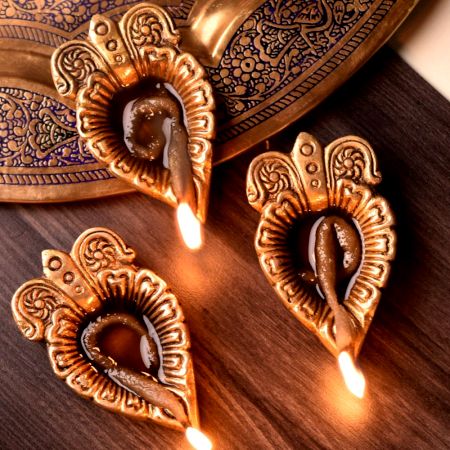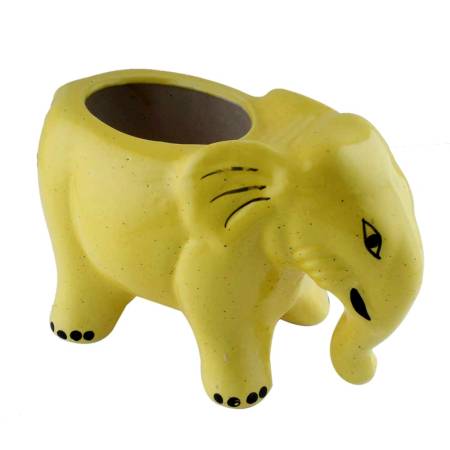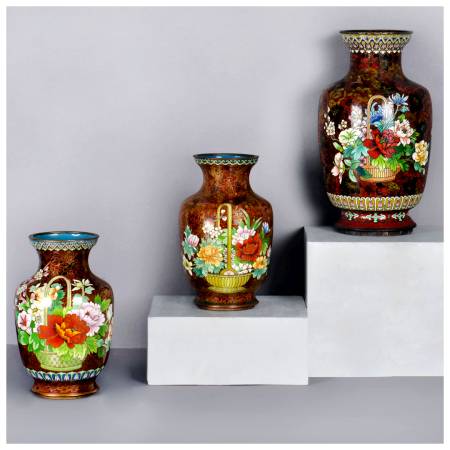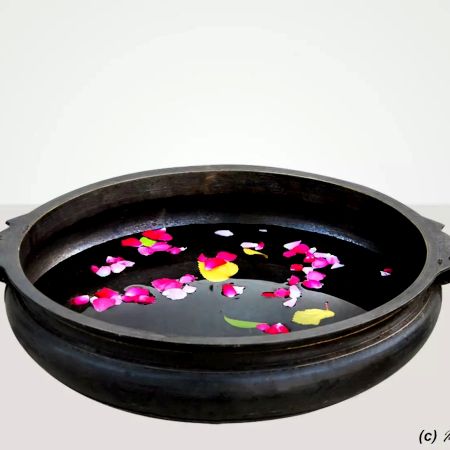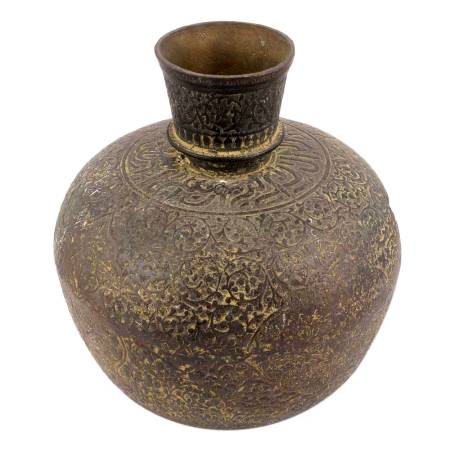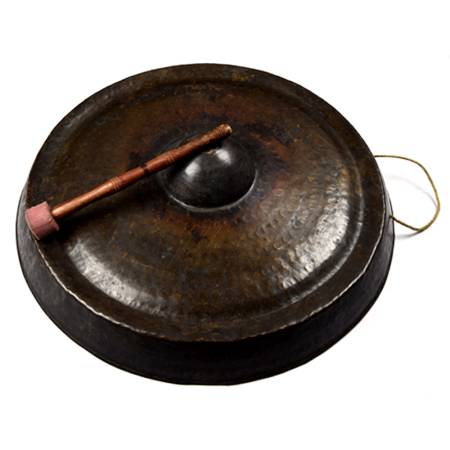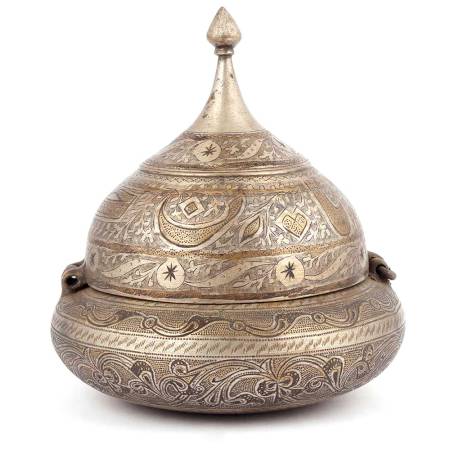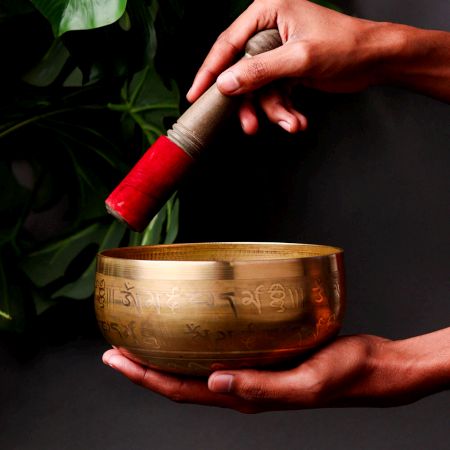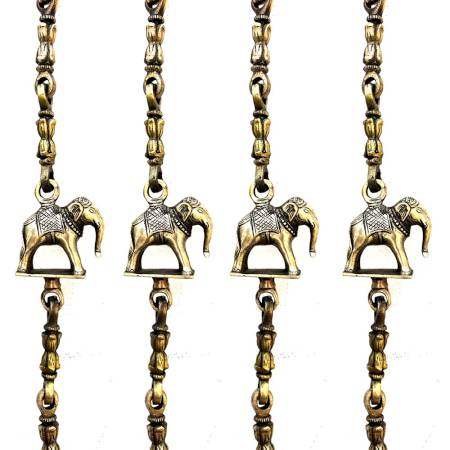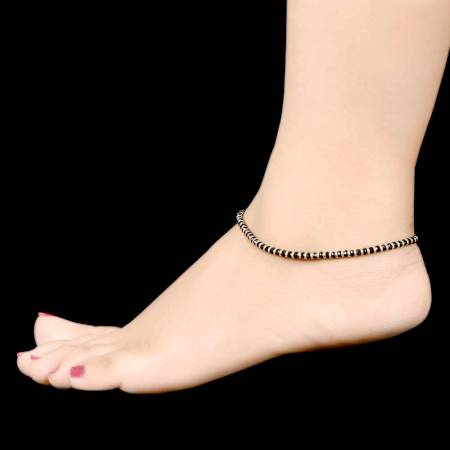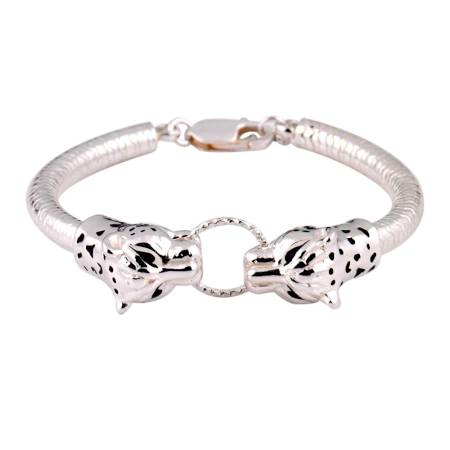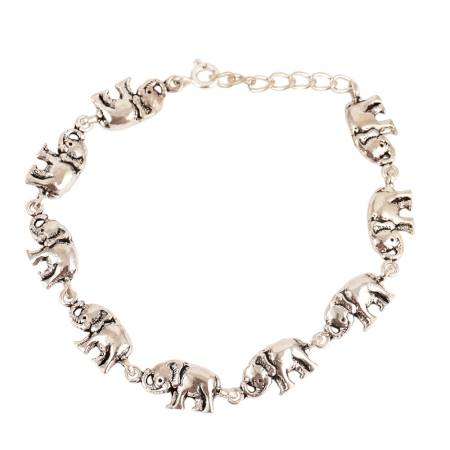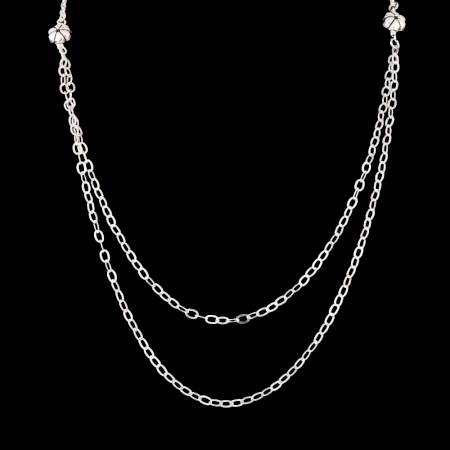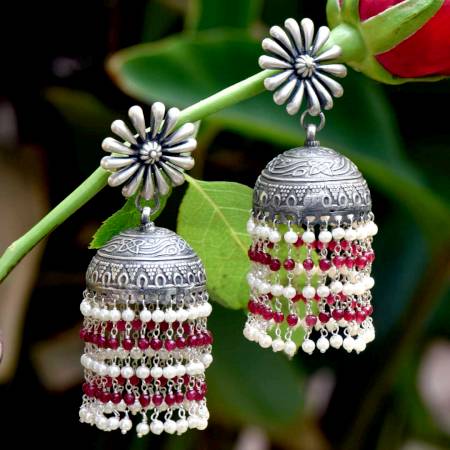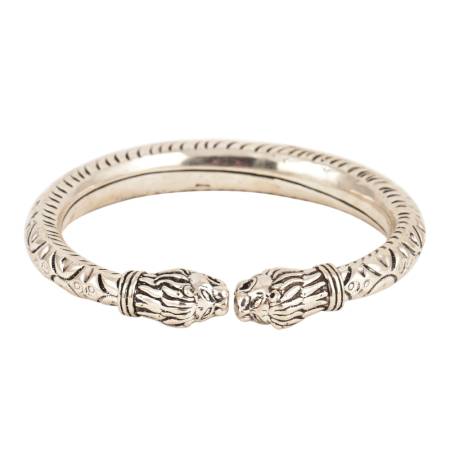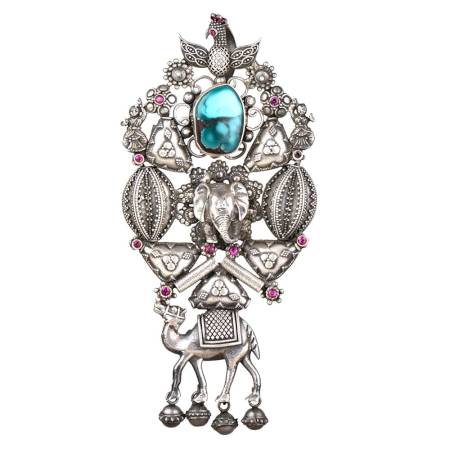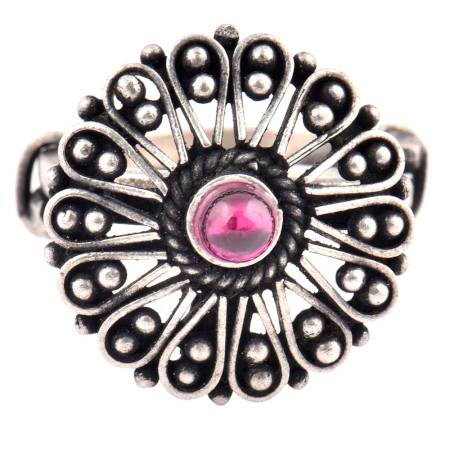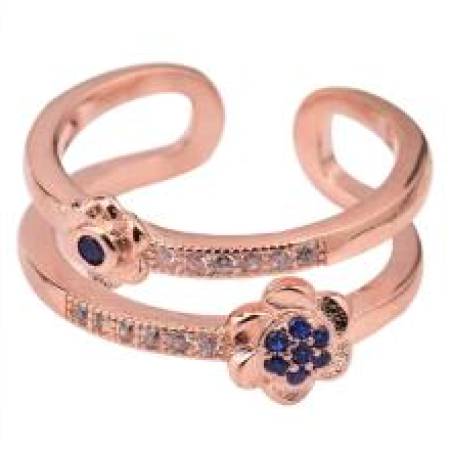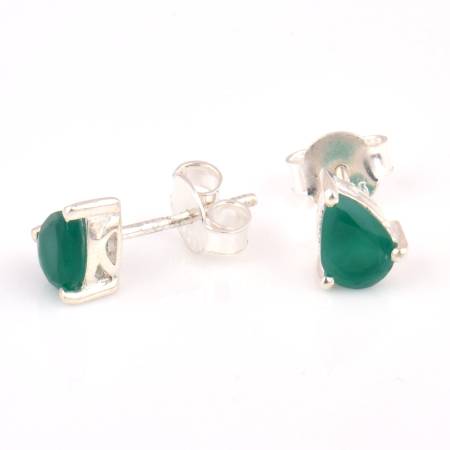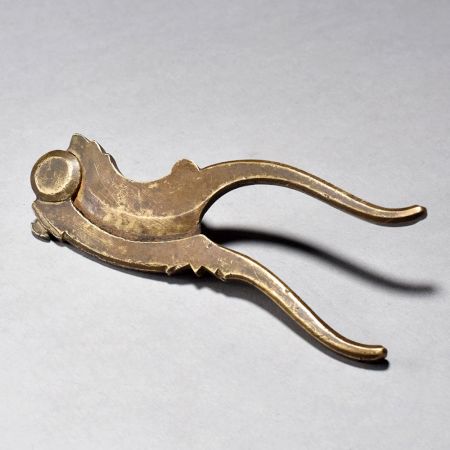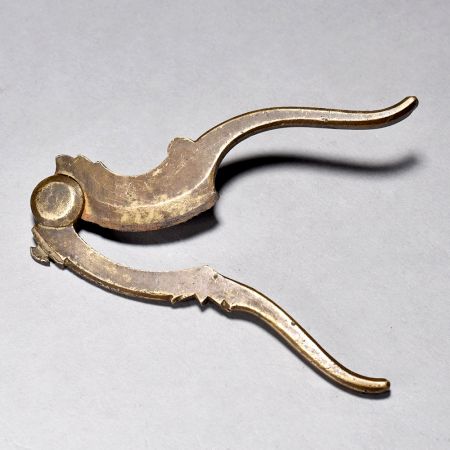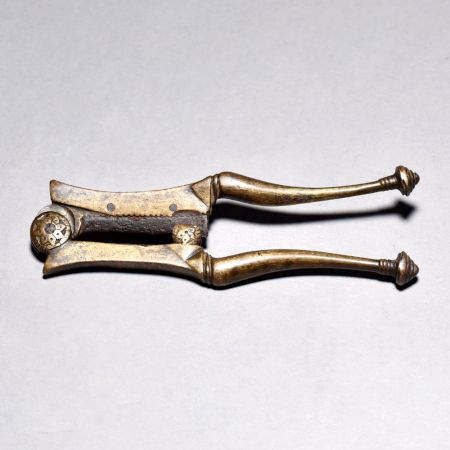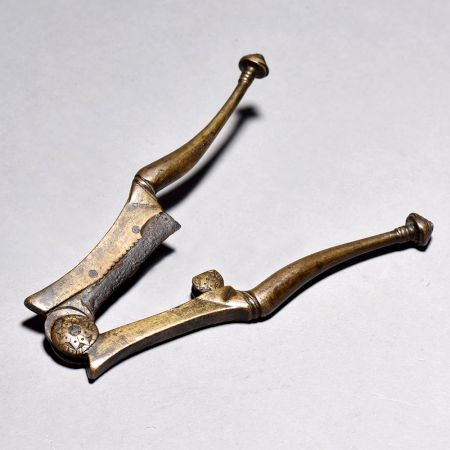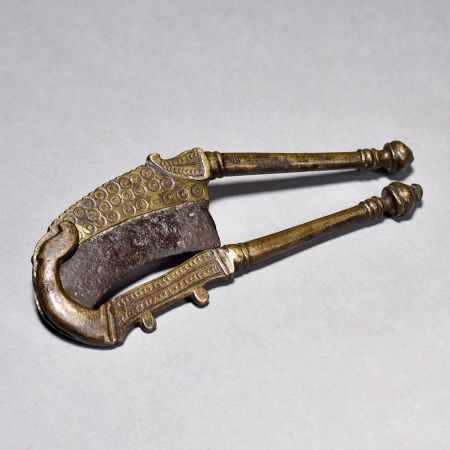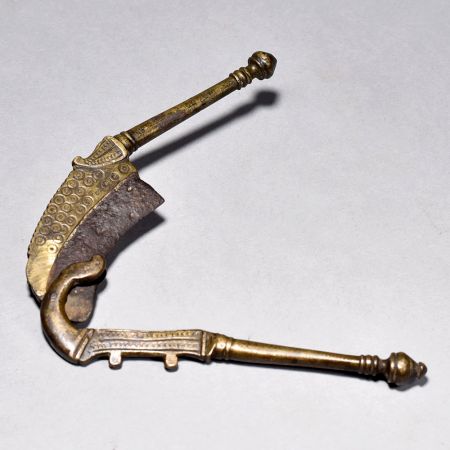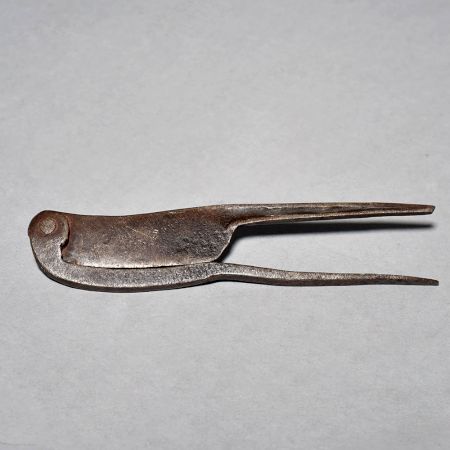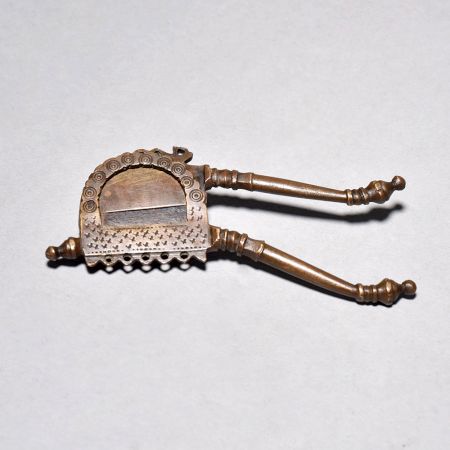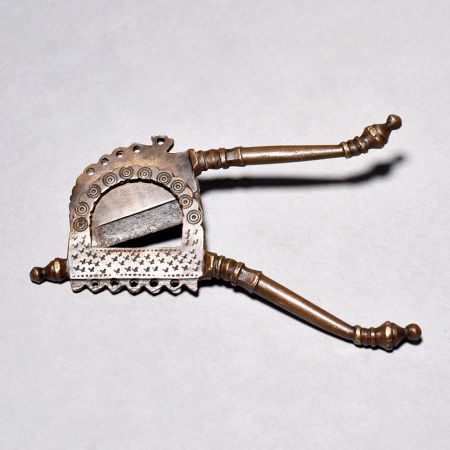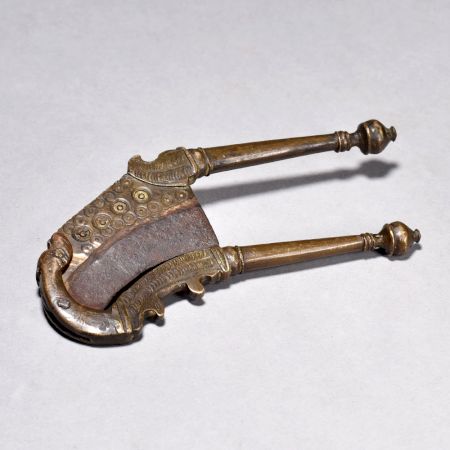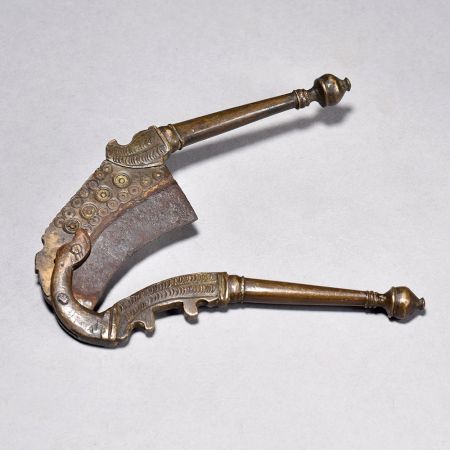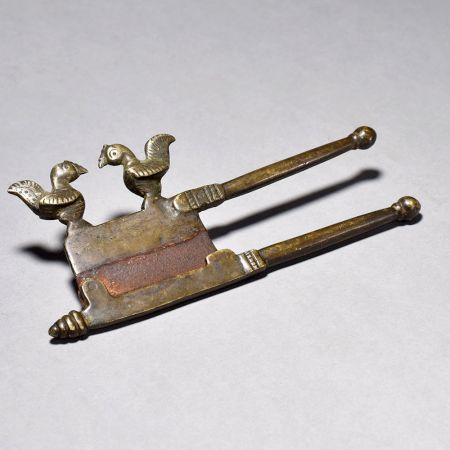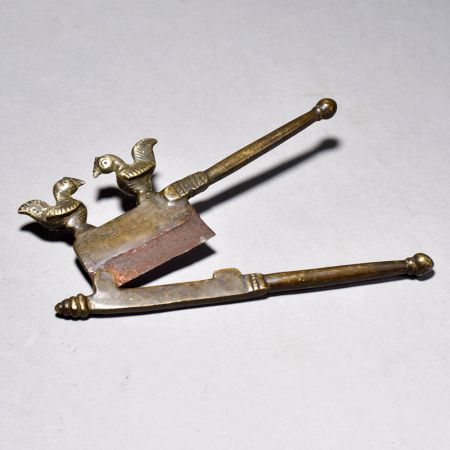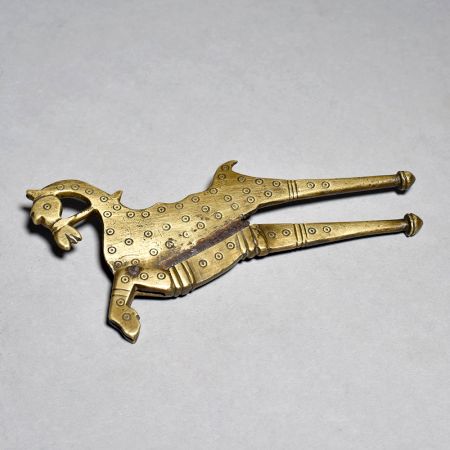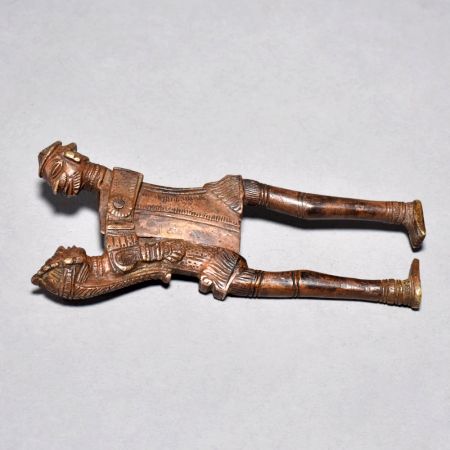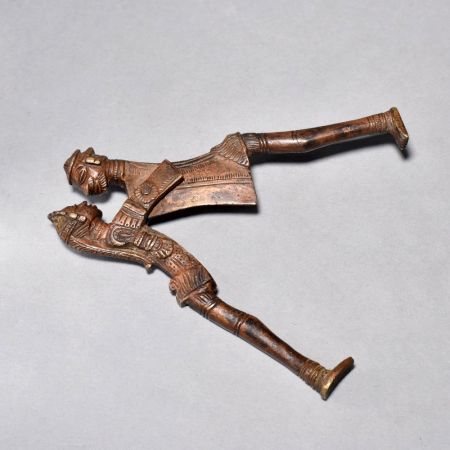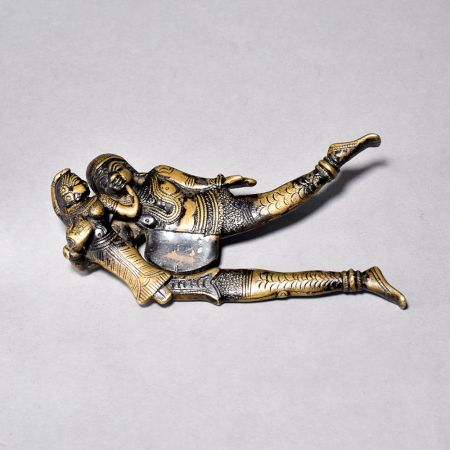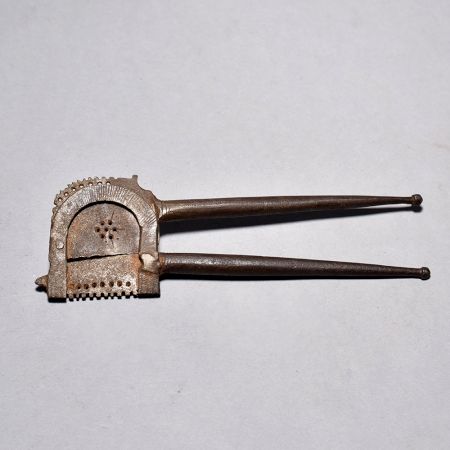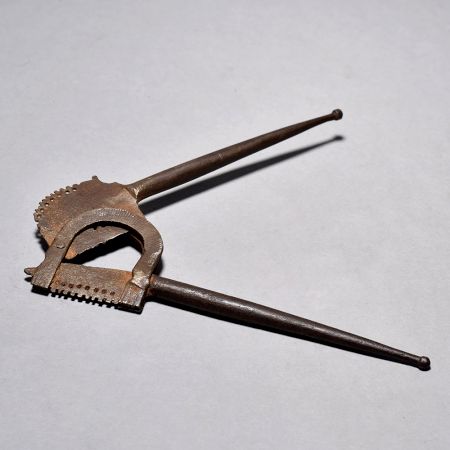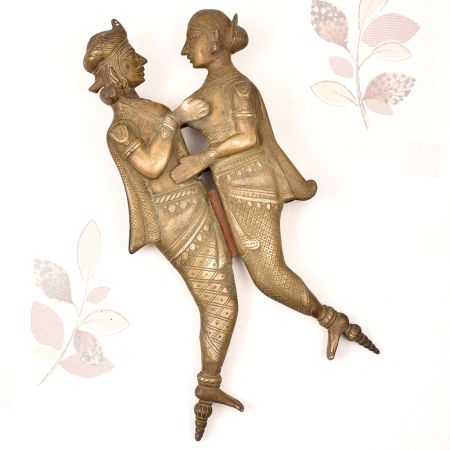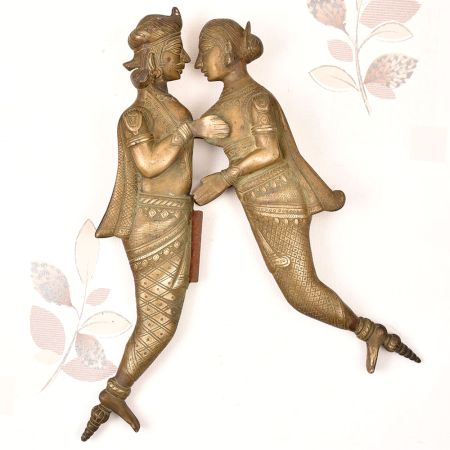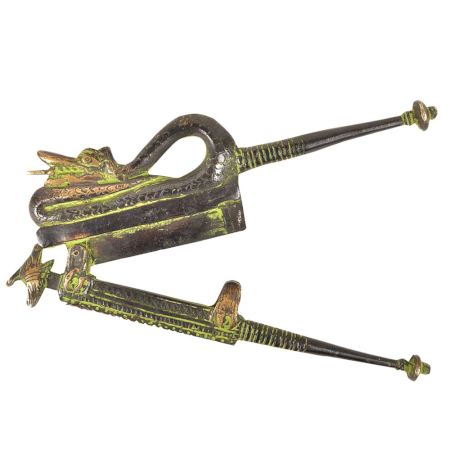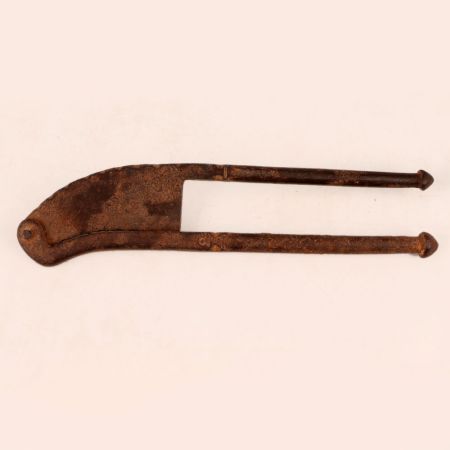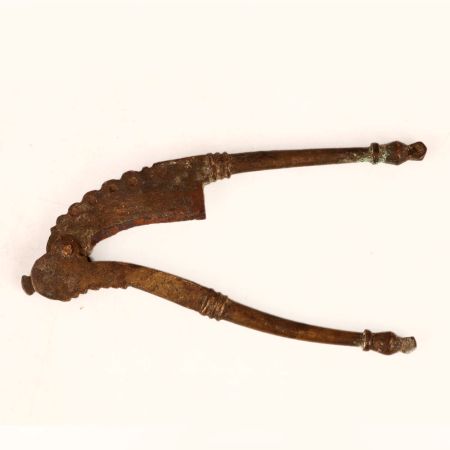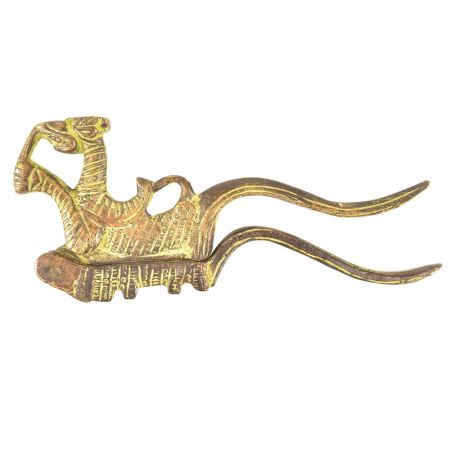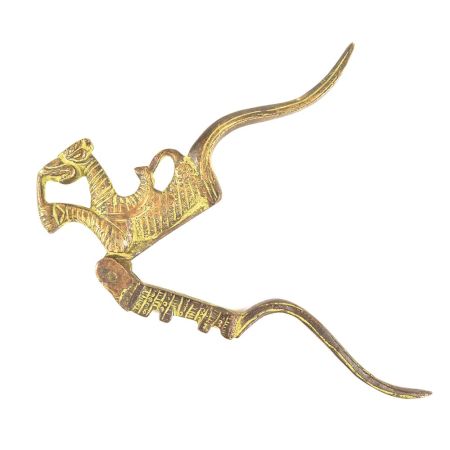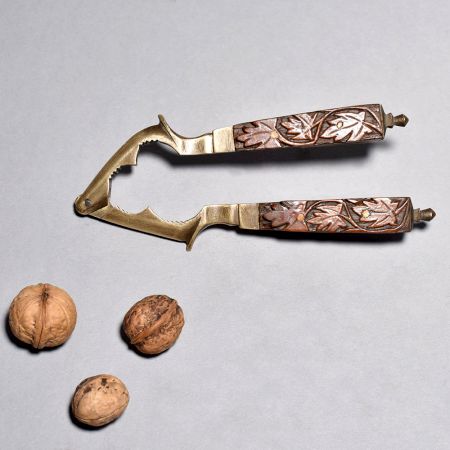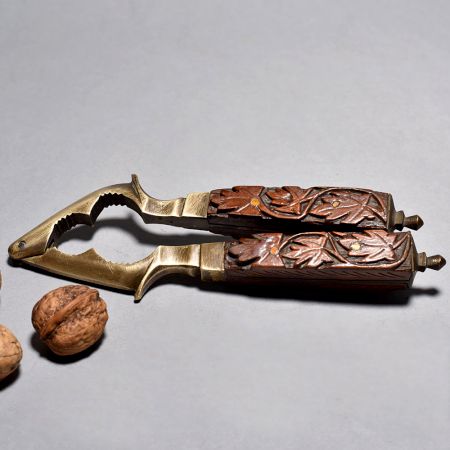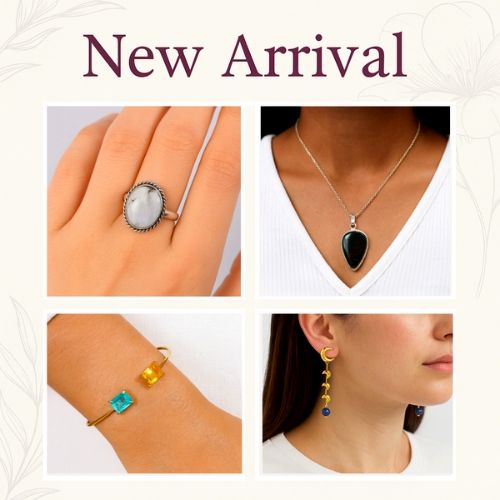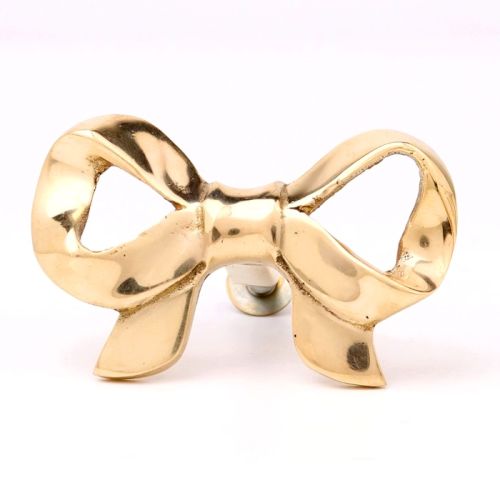Brass Milk Pot Cylindrical Shape Knob Finial Engraved Cicrcular Lines On Lid
- ₹ 11,880.00
-
Only 1 left
Vintage Kitchen Tools: Timeless Collectibles or Kitchen Decor
Vintage kitchen tools refer to utensils and equipment that were commonly used in the kitchen at least 20 to 50 years ago. These tools often reflect the craftsmanship, materials, and cultural practices of the era in which they were made. For example, vintage milk containers, typically made from aluminum or glass, originated during a time when milk delivery was common. These containers often came with a lid and were reusable. Vintage nutcrackers, on the other hand, have a much older history, with ornate, cast iron designs popular in the 19th and early 20th centuries. Both tools were created to serve practical household purposes but have since become collector's items or decor due to their nostalgic and aesthetic appeal. Their origin is closely tied to the domestic practices of different cultures, particularly in rural and suburban households where food was often processed and served fresh.
How do vintage kitchen tools differ from modern or contemporary kitchen equipment?
Vintage kitchen tools differ significantly in terms of materials, design, and functionality. For instance, a vintage milk container is often made from thick glass or aluminum, with a simple, robust design for long-term use and easy cleaning. In contrast, modern milk storage tends to be disposable plastic or cartons designed for single-use convenience. Similarly, vintage nutcrackers, often made from cast iron or heavy-duty metal with intricate engravings, were built for durability and aesthetics. Modern nutcrackers are usually made from lightweight metals or plastic, emphasizing functionality over form. Vintage tools often require manual operation and carry a tactile quality that adds a sense of ritual to kitchen work. In contrast, modern tools prioritize speed and efficiency. The nostalgia, quality of craftsmanship, and environmentally friendly materials of vintage kitchen tools distinguish them from their mass-produced, modern counterparts.
What are the different styles or types of vintage kitchen tools commonly found today?
Vintage kitchen tools come in a variety of styles, each reflecting the era and region of their use. When it comes to vintage milk containers, you might find glass milk bottles with embossed branding, aluminum milk churns with tight-sealing lids, and ceramic milk jugs used in more decorative settings. These styles varied from utilitarian farm-use to household display. Vintage nutcrackers, meanwhile, range from the simple lever-type design to the more intricate screw-type mechanisms. Some nutcrackers were designed to resemble figurines or animals, particularly in European traditions, blending function with folk art. Others featured heavy-duty cast iron bodies with long handles for industrial or culinary use. The diversity in design showcases the creativity and practicality of past generations. Collectors today often seek these distinct styles for their craftsmanship and historical value, and they can add a nostalgic or rustic charm to modern kitchens.
Which materials were most commonly used to make vintage kitchen tools?
The materials used in vintage kitchen tools were chosen for durability, function, and availability at the time. Vintage milk containers were primarily made from glass or aluminum. Glass was favored for its non-reactive surface and ease of cleaning, while aluminum offered a lightweight, sturdy alternative ideal for transport and daily use. These containers often came with metal or rubber lids to preserve freshness. Nutcrackers from earlier eras were typically constructed from cast iron, brass, or steel, all known for their strength and resilience. Some decorative nutcrackers, particularly in European countries, were made from wood and painted with vivid colors. The emphasis was on long-lasting utility and craftsmanship, with many items being passed down through generations. Unlike modern plastic alternatives, these vintage materials were environmentally sustainable and designed to withstand years of repeated use without compromising their functionality or appearance.
What motifs or decorative elements are often seen on vintage kitchen tools?
Vintage kitchen tools, especially items like milk containers and nutcrackers, often featured ornate designs that reflect the aesthetics of their time. Glass milk bottles sometimes had embossed logos or dairy farm names, adding a personalized touch and an element of brand identity. Aluminum milk containers occasionally featured ridges or fluted designs to strengthen the structure and enhance grip. Nutcrackers, particularly those from Europe, were often adorned with elaborate carvings or painted to resemble soldiers, kings, or animals—especially in wooden German nutcrackers associated with Christmas. Cast iron nutcrackers could have floral motifs or intricate scrollwork as part of their handles or base. These decorative details weren’t just ornamental—they reflected the artistic sensibilities of their makers and brought charm and individuality to everyday kitchen items. Such embellishments are highly valued by collectors today for their historical and artistic value, making each piece a unique representation of its era.
Where can I buy authentic vintage kitchen tools like milk containers and nutcrackers online?
Authentic vintage kitchen tools, such as milk containers and nutcrackers, can be found across several trusted online platforms. Websites like IndianShelf, Etsy, eBay, and Ruby Lane offer a variety of vintage and antique items, often sold by independent sellers or collectors. For a more curated selection, online antique shops and niche retailers specializing in kitchenware or farmhouse decor can provide assurance in terms of authenticity and condition. It’s important to check the seller’s reviews, item descriptions, and photographs carefully before purchasing. For collectors, auction sites or estate sales listed online also serve as valuable sources. Some vintage-focused Instagram stores and Facebook Marketplace listings may also feature one-of-a-kind finds, especially in local communities. Whether you’re buying for functional use or decorative purposes, ensure the item’s age, material, and maintenance condition are clearly mentioned to avoid purchasing reproductions marketed as authentic vintage pieces.
How can I incorporate a vintage milk container or nutcracker into a modern kitchen setup?
Incorporating vintage milk containers and nutcrackers into a modern kitchen can be a stylish way to blend nostalgia with contemporary design. A vintage milk container can serve as a unique vase for flowers, a rustic utensil holder, or even a centerpiece on your kitchen island. Its timeless charm and durability allow it to be both decorative and practical. A vintage nutcracker, especially ornate or sculptural ones, can be displayed on open shelving or used seasonally as a functional accent piece. If your kitchen has open cabinetry or floating shelves, showcase these vintage items alongside modern cookware to create visual contrast and character. Pairing these tools with natural wood, metal, or ceramic elements enhances the rustic-modern vibe. The key is to highlight their uniqueness without overcrowding your space—each item can tell a story while enhancing your kitchen’s overall aesthetic.
How are vintage kitchen tools like milk containers and nutcrackers preserved and celebrated today?
Today, vintage kitchen tools such as milk containers and nutcrackers are preserved through careful restoration and display. Collectors and enthusiasts clean and maintain these items using appropriate methods that protect their original finishes and materials. Glass and aluminum milk containers are often restored by removing stains or rust, while nutcrackers may be polished or repaired to retain their decorative charm. Museums and culinary exhibitions often feature these tools as part of heritage displays, showcasing the evolution of domestic practices. In households, they are displayed as part of vintage kitchen decor or repurposed in creative ways. Holiday traditions, particularly in Europe and North America, often bring vintage nutcrackers to the forefront as part of festive decorations. Online communities and forums also keep the culture alive by sharing restoration tips, histories, and sourcing recommendations, ensuring that these charming tools continue to be appreciated across generations.
How is vintage Indian cooking tool culture, such as milk containers, linked to sustainability?
Vintage Indian kitchen tools, including milk containers, have a strong link to sustainability due to their reusable and durable nature. Traditionally, milk was delivered directly to homes in aluminum or brass containers, eliminating the need for disposable packaging. These containers were washed and reused for years, significantly reducing waste. Their design also allowed for easy transport and storage without the reliance on refrigeration, conserving energy. Unlike modern single-use plastics, these vintage tools reflect a lifestyle centered on resourcefulness and minimalism. The practice of using, maintaining, and passing down these containers contributes to a circular economy. Nutcrackers, often made from cast iron or wood, are another example—built to last for decades with minimal environmental impact. Reviving the use of these vintage tools today aligns with eco-conscious living, encouraging people to reduce plastic dependency and appreciate products that offer both longevity and cultural heritage.
What are the best vintage Indian cooking tool gift ideas, particularly for milk containers and nutcrackers?
Vintage Indian cooking tools make thoughtful and culturally rich gift ideas, especially for those who appreciate tradition and craftsmanship. A beautifully restored vintage milk container—perhaps with an engraved design or local craftsmanship—can serve as a stunning decor item or even a flower vase in modern homes. For an added personal touch, pair it with a handwritten note or a locally sourced food item. Vintage nutcrackers, particularly ornate or figurative ones, can be gifted as seasonal decor or collectibles. Wooden or brass nutcrackers with folk motifs can appeal to those who value heritage arts. These tools also make memorable housewarming or wedding gifts, combining function, nostalgia, and elegance. You could present them in a traditional wooden box or cloth bag to enhance the experience. Their uniqueness and charm make them standout gifts that carry a story and symbolize sustainability and culture.
How can I identify an authentic vintage milk container or nutcracker?
Identifying an authentic vintage milk container or nutcracker involves examining several key characteristics. For milk containers, check for signs of aging such as patina on metal, wear around the lid, or glass clouding. Look for embossed logos, dairy stamps, or makers' marks that can date the piece. Glass bottles may include a city name or brand, and aluminum versions often have rivets or seam lines that show hand-assembly. For nutcrackers, study the material—authentic pieces are usually cast iron, brass, or hardwood, not plastic or thin aluminum. Look for traditional shapes and mechanisms, as well as detailing like carvings or hand-painting. European nutcrackers, for example, may include the manufacturer’s name or region stamped under the base. Avoid items that appear too pristine, as they might be modern reproductions. Researching specific designs and comparing them to documented vintage models can help verify authenticity.
Are vintage kitchen tools like milk containers and nutcrackers still usable, or are they mostly decorative today?
Vintage milk containers and nutcrackers can be both functional and decorative, depending on their condition. Many vintage milk containers, especially those made of glass or aluminum, remain entirely usable today for non-dairy purposes. They are often repurposed to hold water, fresh flowers, or dry ingredients, adding a rustic touch to modern interiors. However, if you plan to use them for storing or serving food, it’s essential to inspect for chips, cracks, rust, or chemical residues, especially in older aluminum. Vintage nutcrackers, particularly those made from cast iron or heavy metal, are typically still capable of cracking nuts effectively. Their sturdy construction allows for practical use even decades after their production. Nevertheless, some ornate or fragile versions—especially painted or carved ones—are better suited for display, as excessive use might damage their decorative features. Overall, these tools offer a charming blend of utility and vintage flair when maintained properly.
What should I look for when collecting vintage milk containers and nutcrackers for value and authenticity?
When collecting vintage milk containers and nutcrackers, pay attention to details that signal authenticity and enhance their value. For milk containers, key features include embossed branding from dairies, visible seams from molding, and signs of wear consistent with age, such as fading or scuffing. Glass containers with city or regional names and dated stamps are especially prized. Aluminum versions with latching lids or original factory labels add to their historical value. For nutcrackers, inspect the materials—genuine vintage pieces are usually cast iron, brass, or solid wood. Hand-carved details, painted embellishments, and traditional screw or lever mechanisms indicate craftsmanship. Avoid items with plastic parts or overly polished finishes, which may suggest modern reproductions. Provenance also matters—pieces with a documented history or known maker can fetch higher value. Condition is crucial, too; while some wear adds charm, cracks or major repairs can reduce collectibility. A discerning eye helps preserve both aesthetic and financial worth.
Can vintage nutcrackers and milk containers be restored or refurbished for modern use?
Yes, both vintage nutcrackers and milk containers can be restored for modern use with careful attention to preservation. For milk containers, start by thoroughly cleaning the interior with a gentle, food-safe cleanser—especially for aluminum models, which may oxidize over time. Glass containers can be soaked in vinegar or baking soda solutions to remove residue or cloudiness. Rust on metal lids or handles can be addressed with a fine wire brush or rust remover, followed by a protective food-safe coating if you plan to reuse it for consumables. Nutcrackers, especially cast iron or brass ones, can be restored by cleaning with mild detergent and applying a light coat of oil to prevent corrosion. Wooden or painted nutcrackers should be handled delicately; touch-ups should only be done with compatible materials to maintain authenticity. Restored properly, these vintage items can reclaim their utility while keeping their vintage charm intact, making them functional collectibles.
What safety precautions should I take when using or displaying vintage kitchen tools?
When using or displaying vintage milk containers and nutcrackers, safety is crucial to avoid injury or contamination. For milk containers, ensure they are free from rust, cracks, or interior corrosion before using them to hold food or drink. Aluminum containers, in particular, should be checked for oxidization, as degraded metal could leach into liquids. Glass containers must be inspected for chips or sharp edges that could cause cuts. For nutcrackers, test the moving parts gently—cast iron models can have stiff hinges or springs that may snap unexpectedly if misused. Avoid using overly fragile or decorative nutcrackers for actual nut-cracking, especially if they have painted or wooden parts. When displaying, place items away from heat sources and out of reach of children to prevent accidents. Using display stands or wall mounts can also help preserve their structure and prevent falls. Proper handling ensures that these cherished vintage items remain both safe and beautiful.
